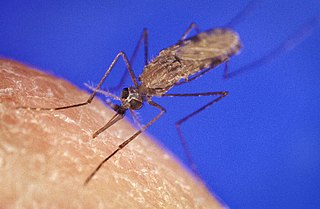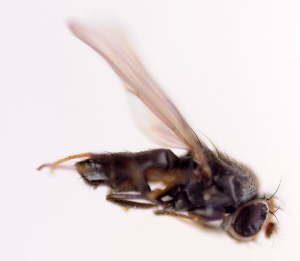
The Culicomorpha are an infraorder of Nematocera, including mosquitoes, black flies, and several extant and extinct families of insects. They originated 176 million years ago, in the Triassic period. There are phylogenetic patterns that are used to interpret bionomic features such as differences in the nature of blood-feeding by adult females, daytime or nighttime feeding by adult females, and occurrence of immature stages in aquatic habitats.

The genus Axarus is widely distributed with records from the Holarctic, the Neotropics and Australasia . There are currently 5 described nearctic species . Erected as a subgenus (Anceus) of Xenochironomus , Axarus was subsequently renamed and elevated to generic status . The Connecticut River in the eastern United States harbors locally dense populations of two Axarus species, both currently undescribed. These populations are interesting in that they are restricted to specific larval habitat and thus there is genetic structure between populations in the river . The Connecticut River species are also notable in that they have extremely well developed polytene chromosomes and also maintain a high degree of inversion polymorphism .
Apedilum is a genus of non-biting midges of the bloodworm family Chironomidae. The genus was previously considered a junior synonym of Paralauterborniella, but was restored as a separate genus by J. H. Epler (1988) for the species A. elachistus and A. subcinctum.

Cricotopus is a genus of non-biting midges in the subfamily Orthocladiinae of the bloodworm family Chironomidae.

Tanytarsus is a large genus of non-biting midges of the tribe Tanytarsini and subfamily Chironominae of the bloodworm family (Chironomidae). The larvae of these insects occur in a wide range of freshwater habitats with some species being marine.

Chironominae is a subfamily of midges in the non-biting midge family (Chironomidae).

Chironomini is a tribe of midges in the non-biting midge family (Chironomidae).
Nilothauma is a genus of European non-biting midges in the subfamily Chironominae of the bloodworm family Chironomidae.

Microtendipes is a genus of non-biting midges in the subfamily Chironominae of the bloodworm family Chironomidae.

Paratendipes is a genus of non-biting midges in the subfamily Chironominae of the bloodworm family Chironomidae.

Sergentia is a genus of European non-biting midges in the subfamily Chironominae of the bloodworm family Chironomidae.
Cryptochironomus is a genus of non-biting midges in the subfamily Chironominae of the bloodworm family Chironomidae.
Stictochironomus is a genus of non-biting midges in the subfamily Chironominae of the bloodworm family Chironomidae. Members of this genus often have strongly marked wings and legs. The larvae of these midges may also have distinct dark patterns on the dorsal side of the head capsule. They live in sand and other sediments in a variety of fresh water habitats in densities of several hundred per square meter.
Demicryptochironomus is a genus of European non-biting midges in the subfamily Chironominae of the bloodworm family Chironomidae.
Demeijerea is a genus of non-biting midges in the subfamily Chironominae of the bloodworm family Chironomidae.

Tribelos is a genus of non-biting midges in the subfamily Chironominae of the bloodworm family Chironomidae.
Paralauterborniella is a genus of non-biting midges in the subfamily Chironominae of the bloodworm family Chironomidae. Apedilum was formerly considered a junior synonym of this genus, but was restored as a separate genus by J. H. Epler (1988) for the species A. elachistus and A. subcinctum.
Parasphaerocera is a genus of lesser dung flies.

Goeldichironomus is a genus of midges in the family Chironomidae. There are about 14 described species in Goeldichironomus. Most species are found in tropical America, with G. carus ranging north to the southern United States.

Discocerina is a genus of shore flies in the family Ephydridae.











